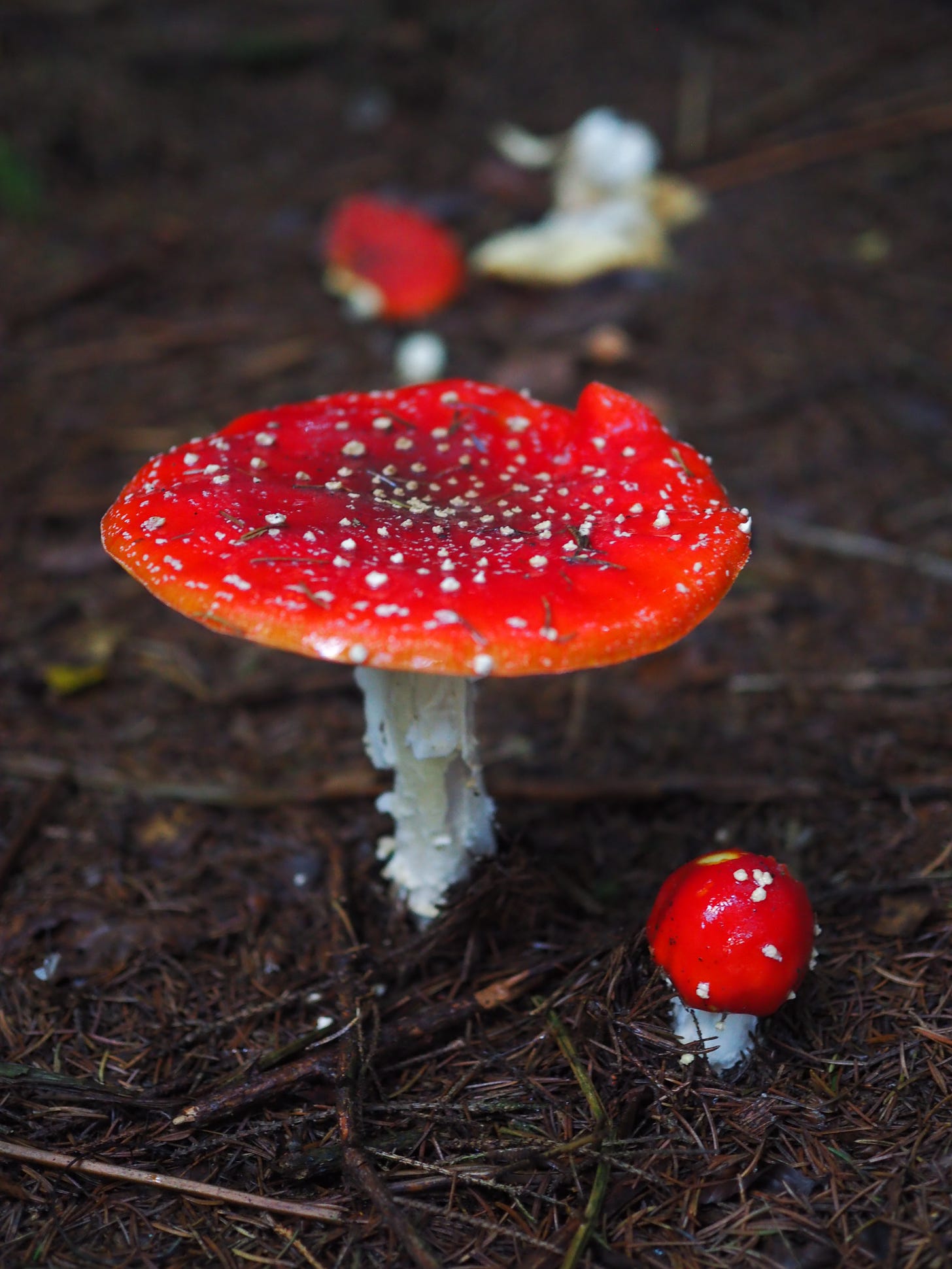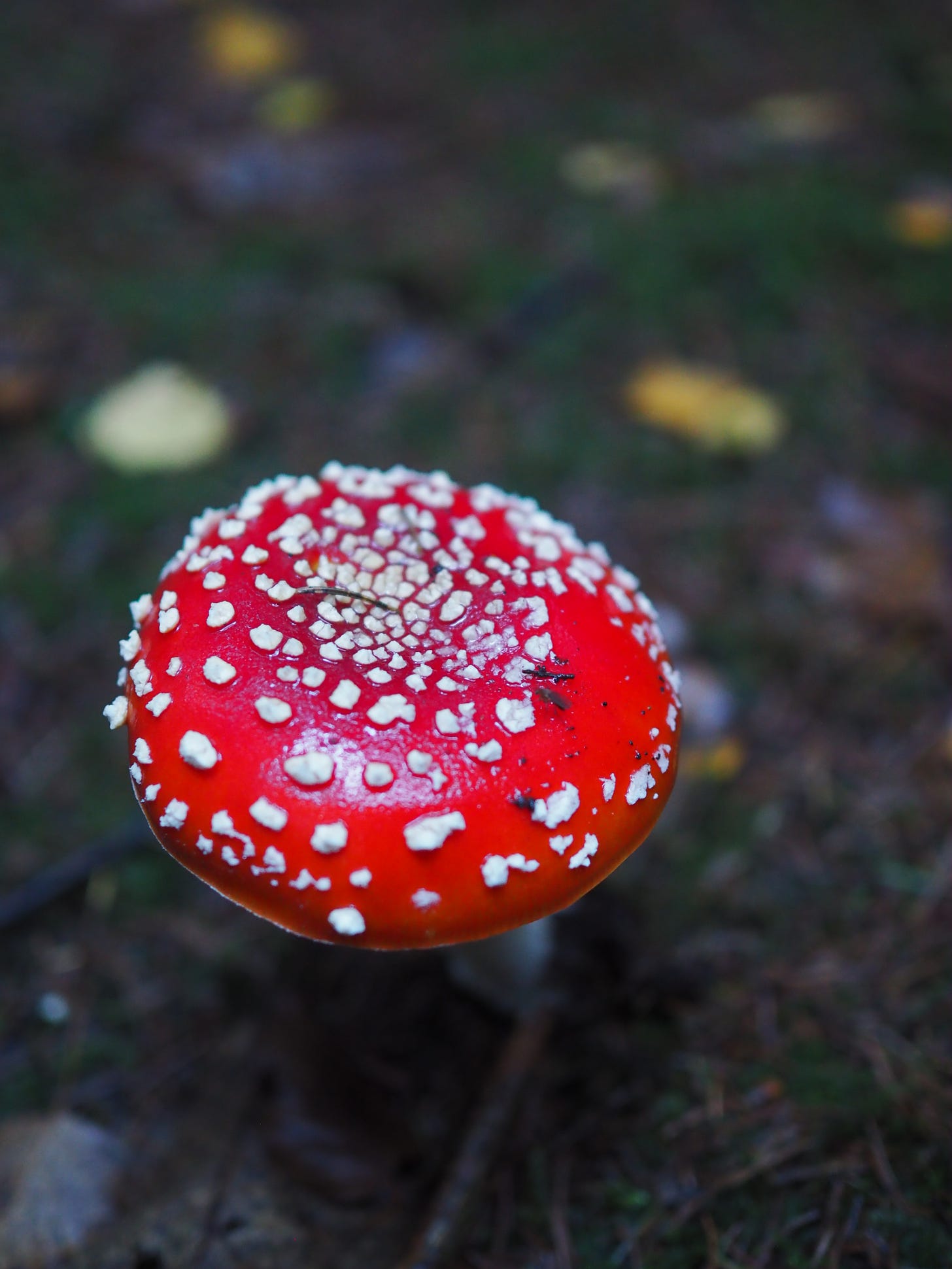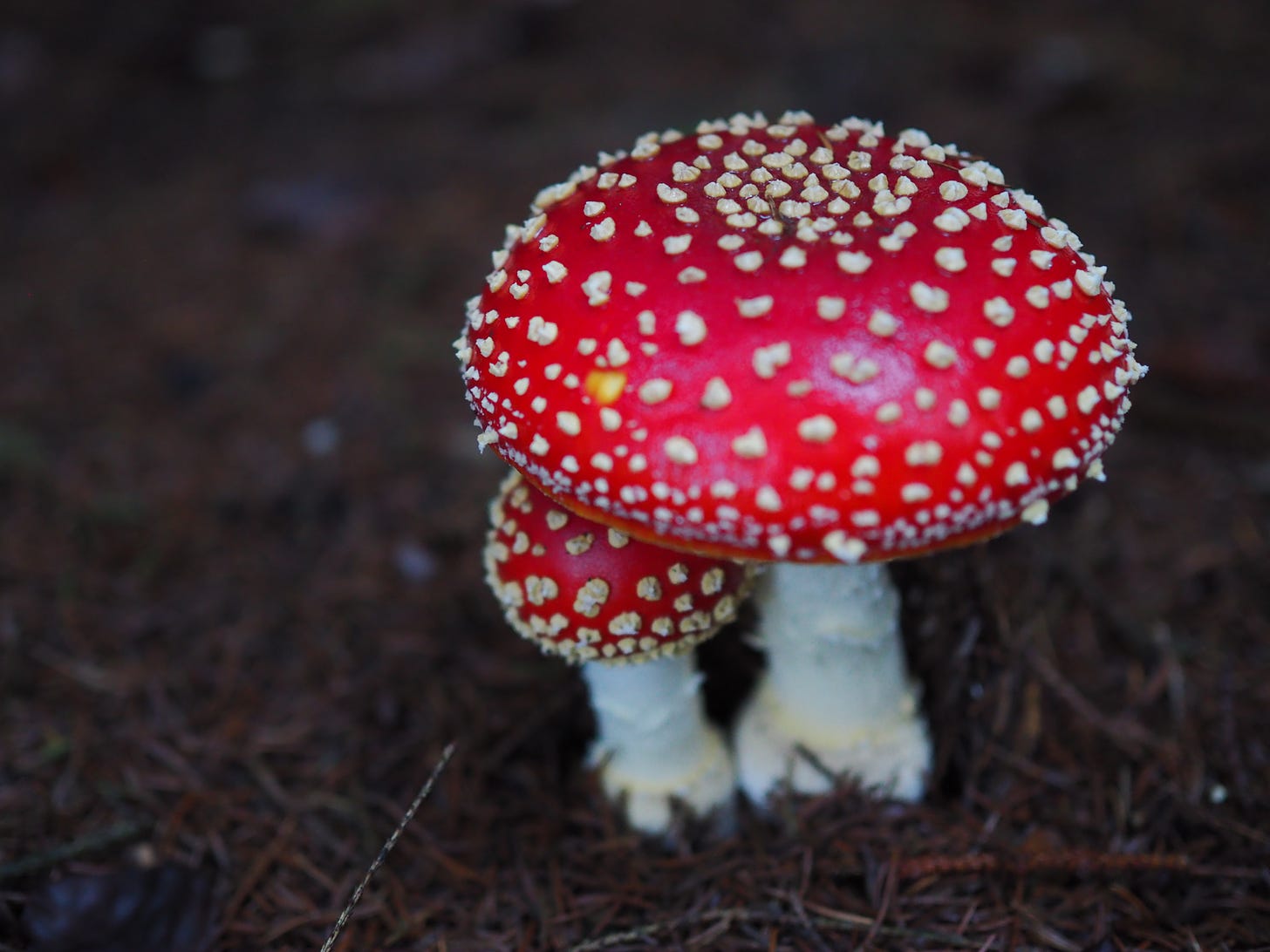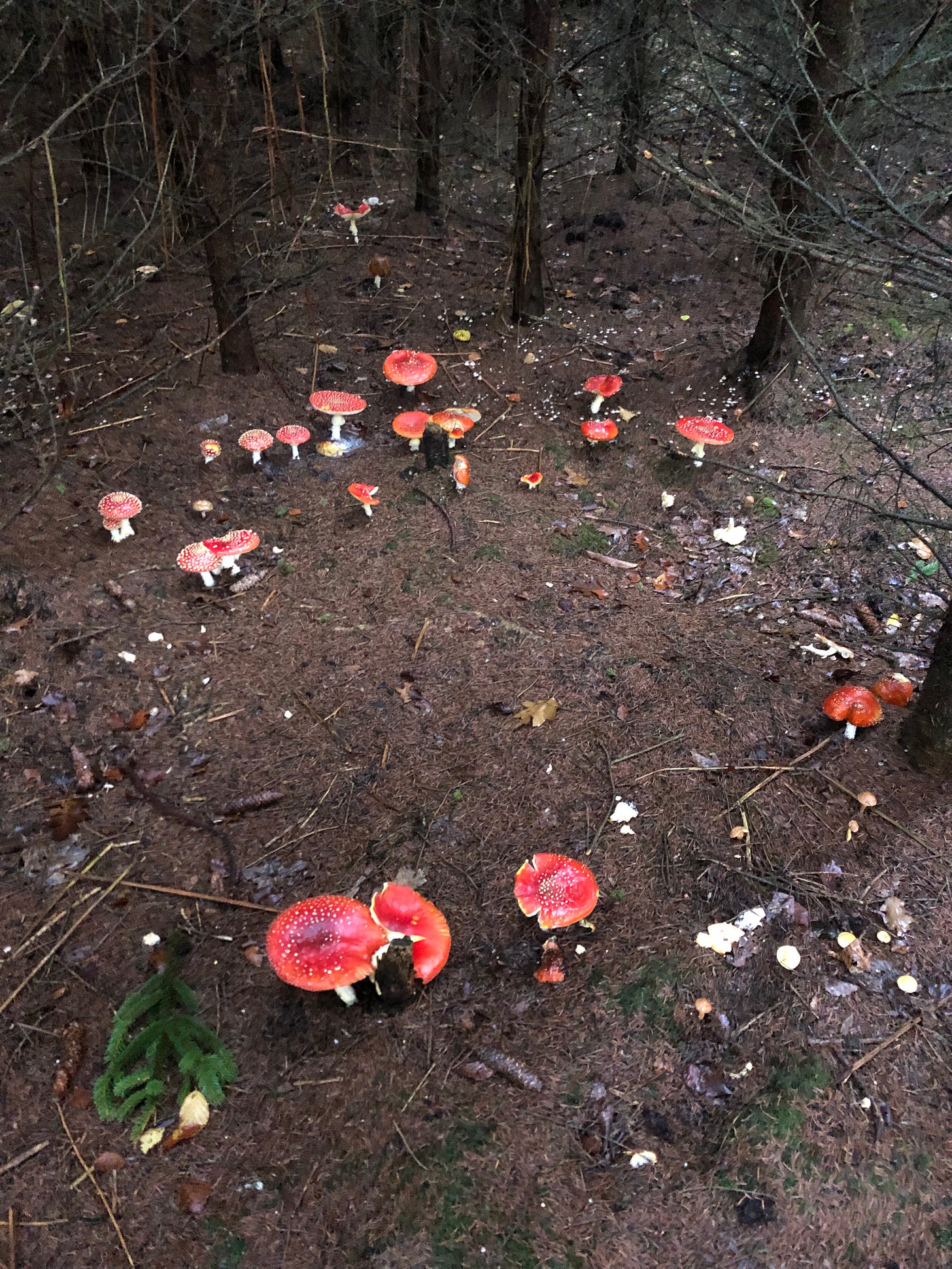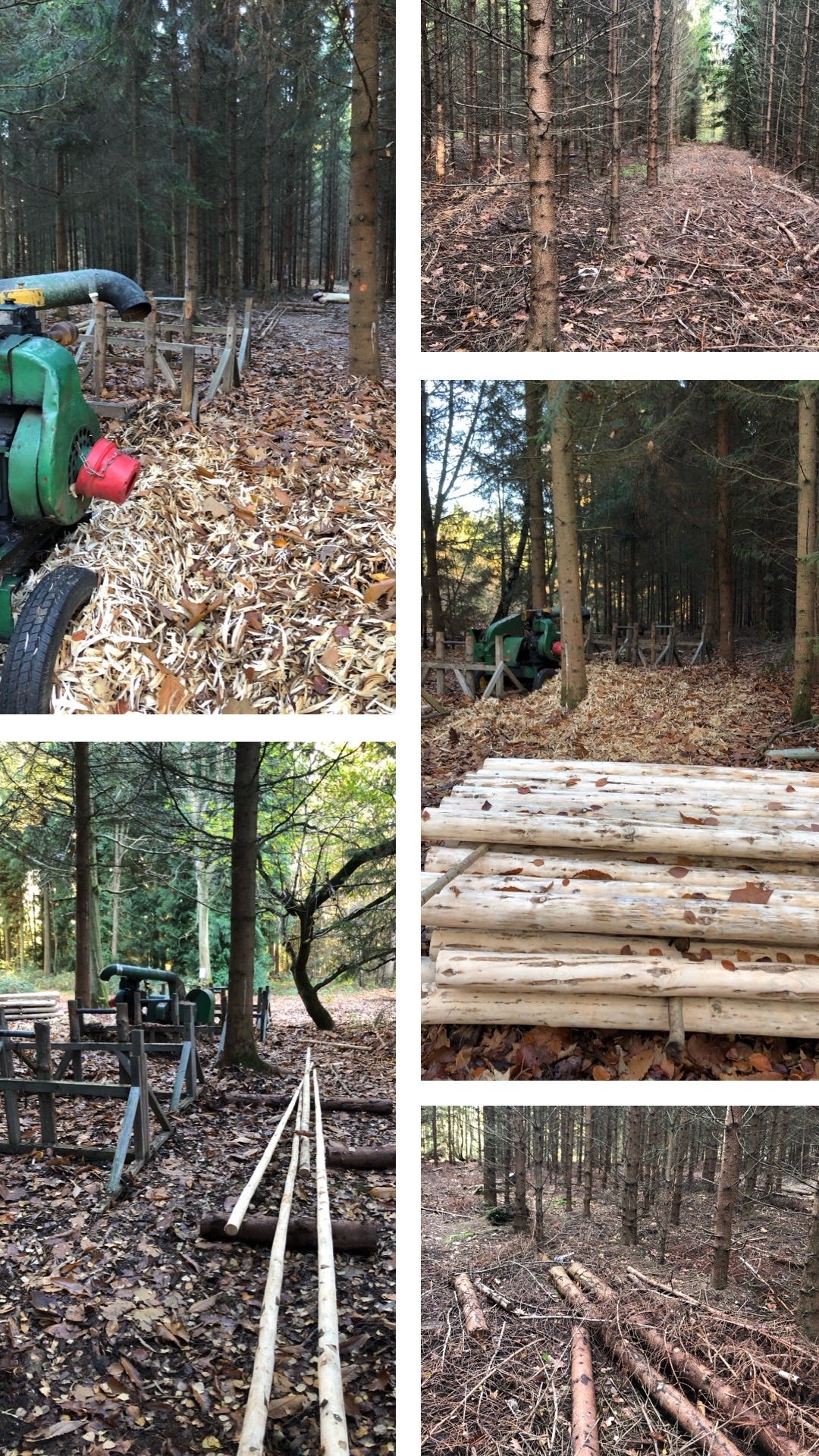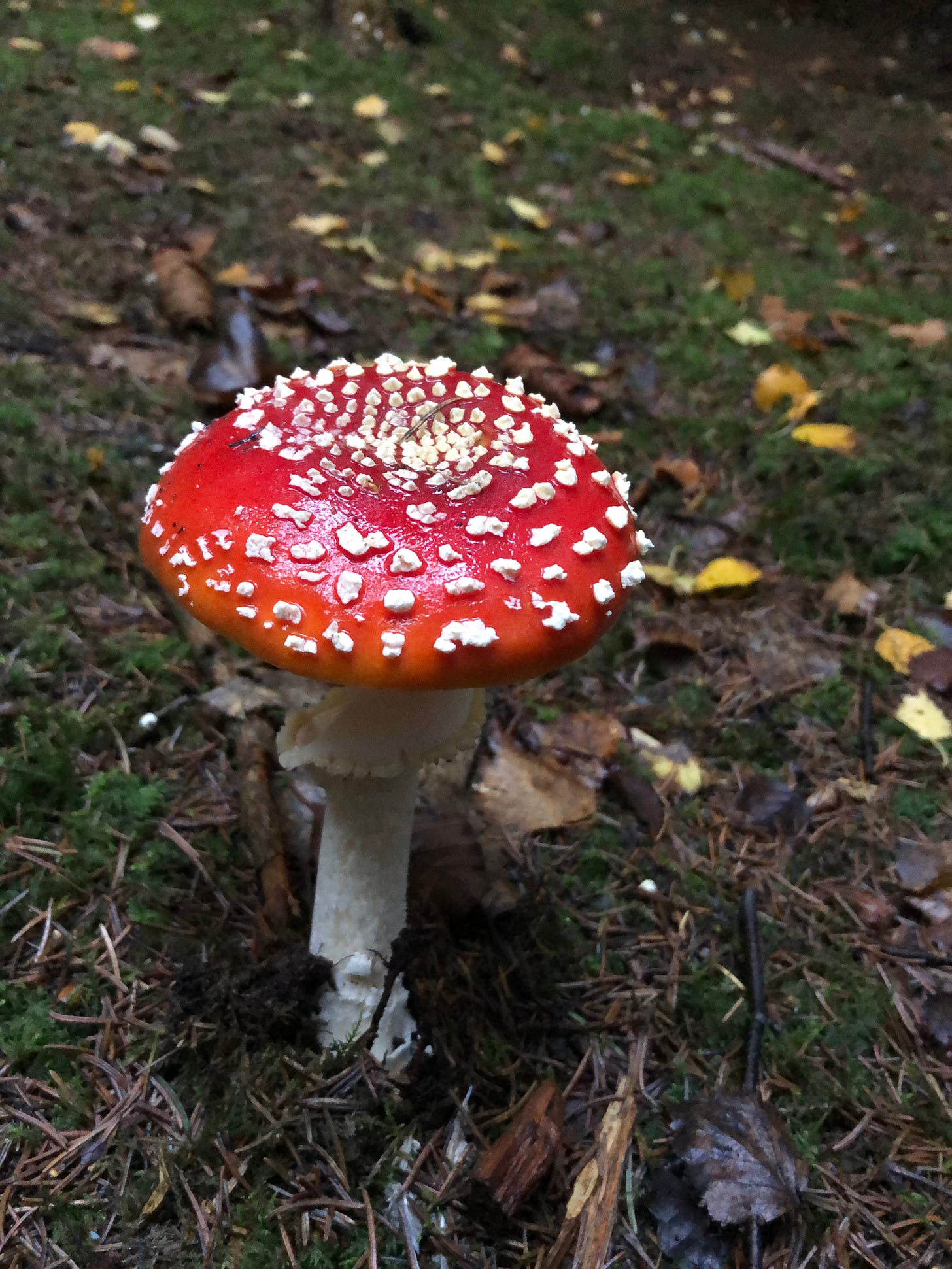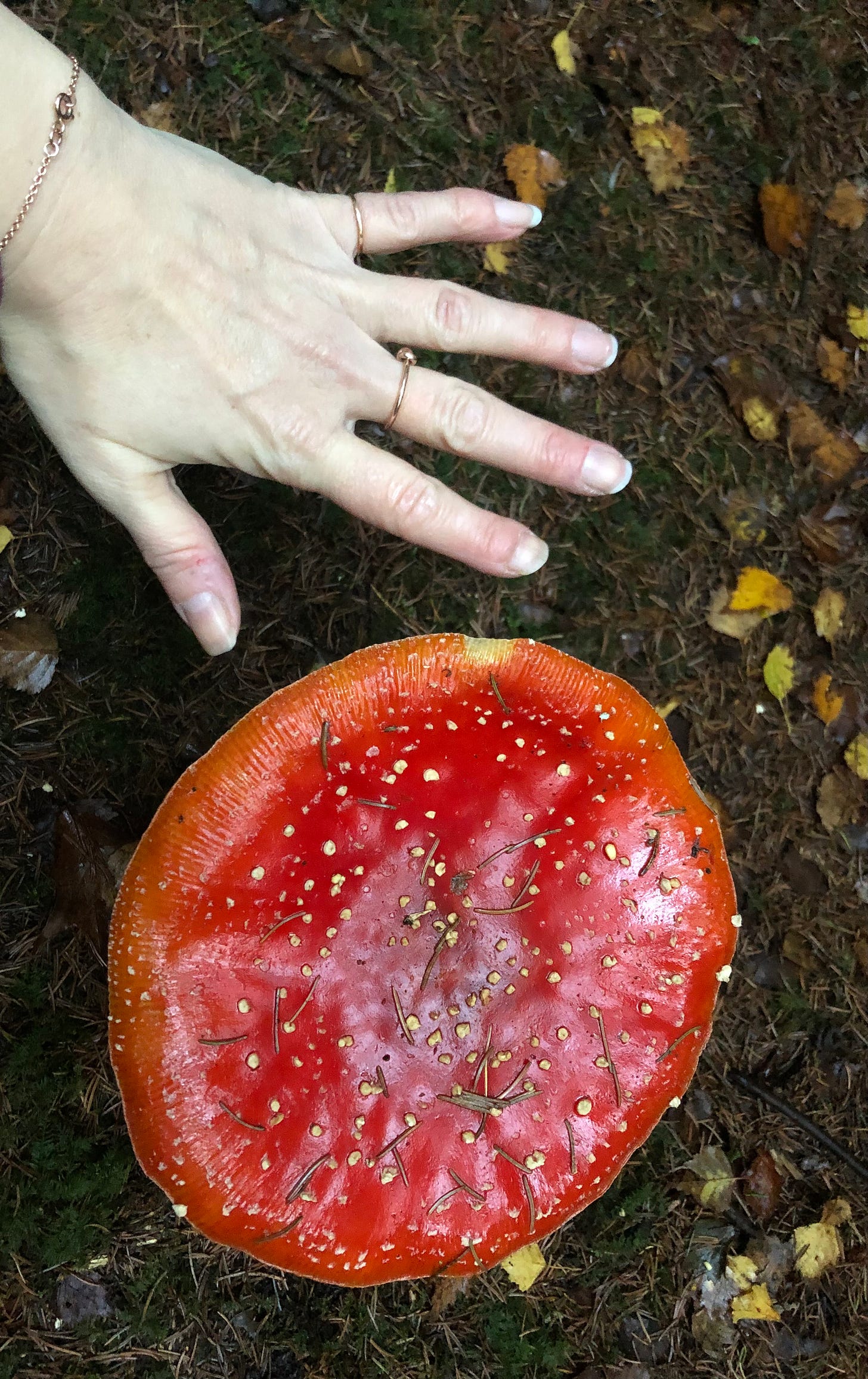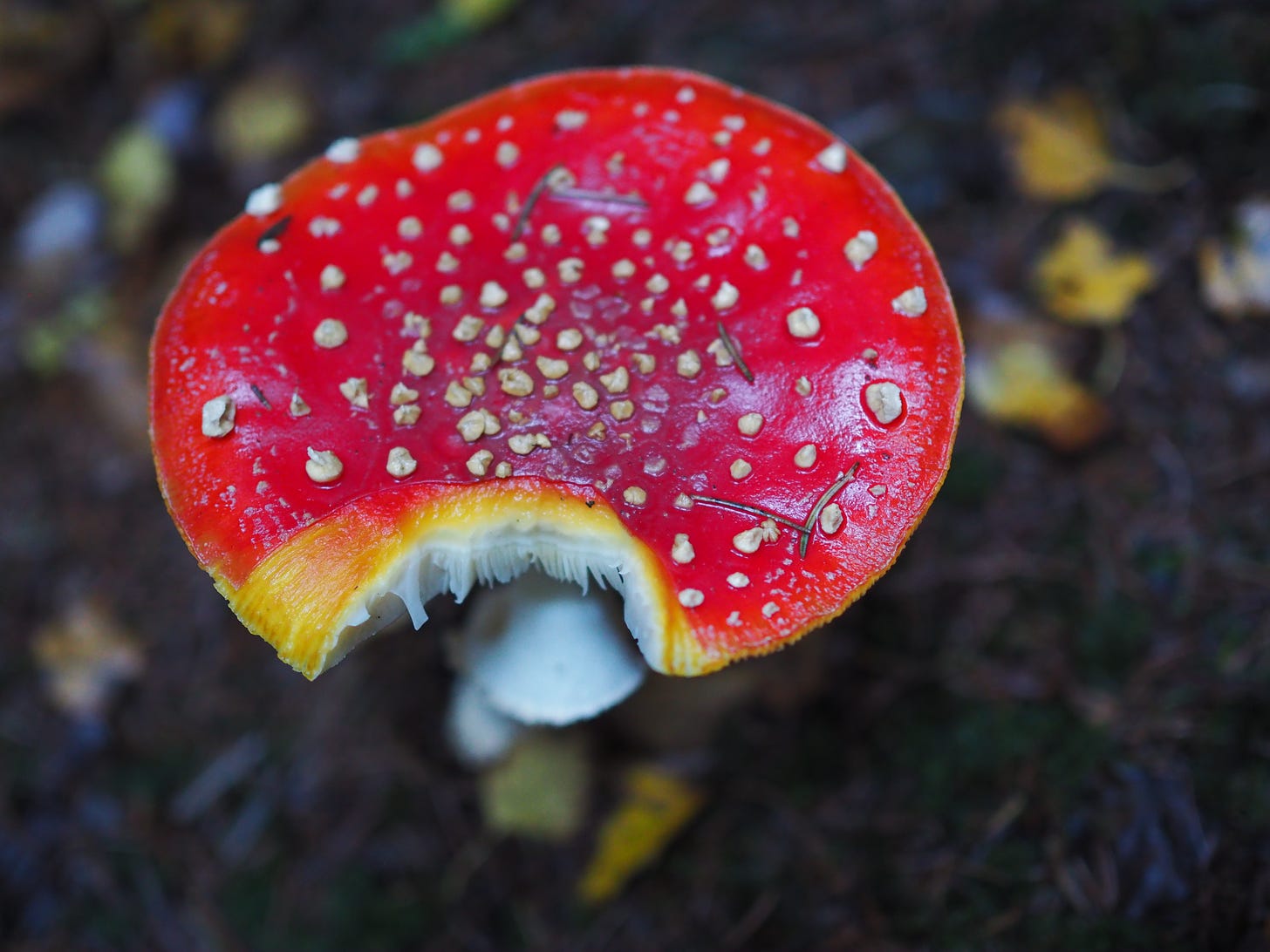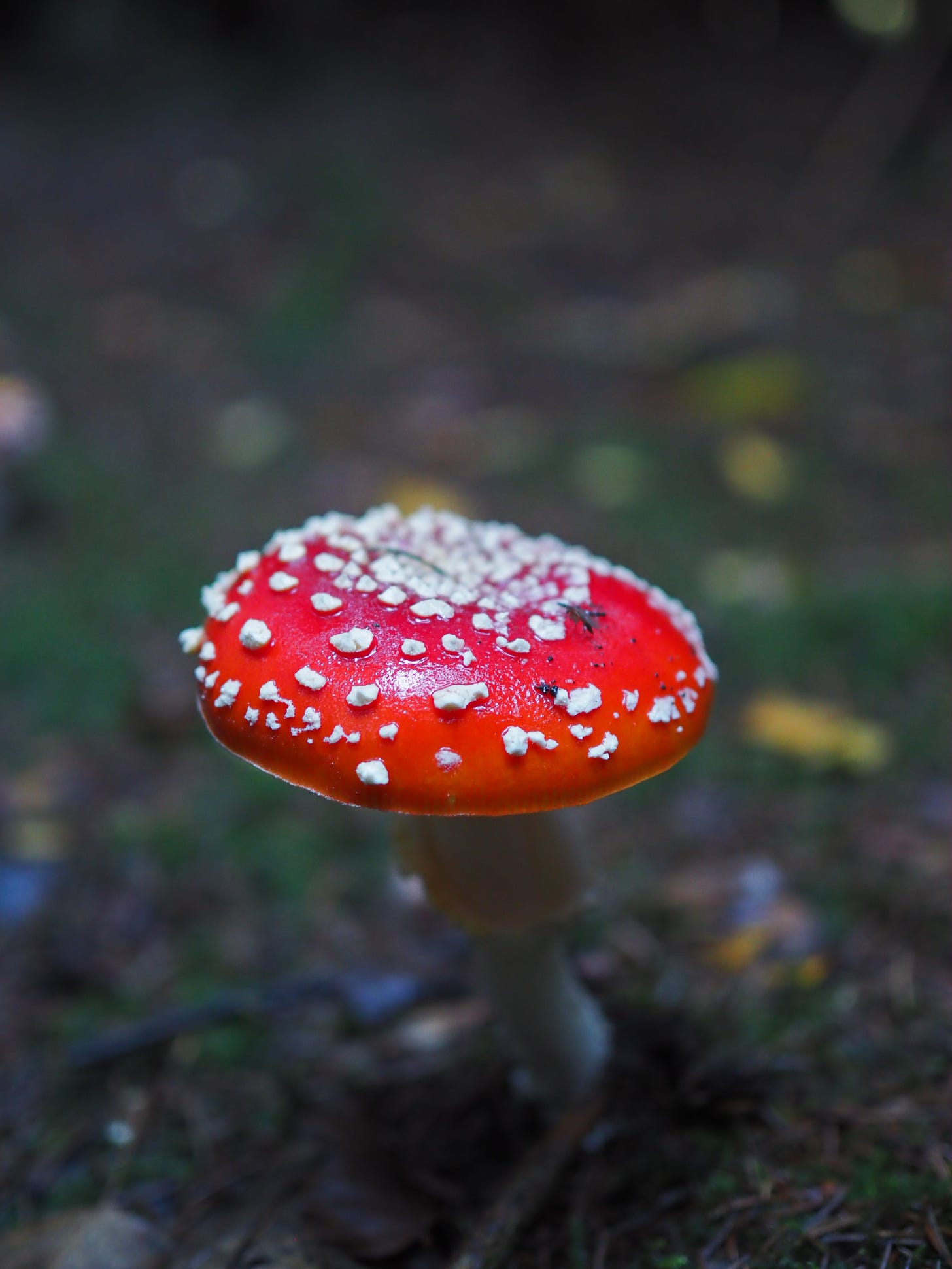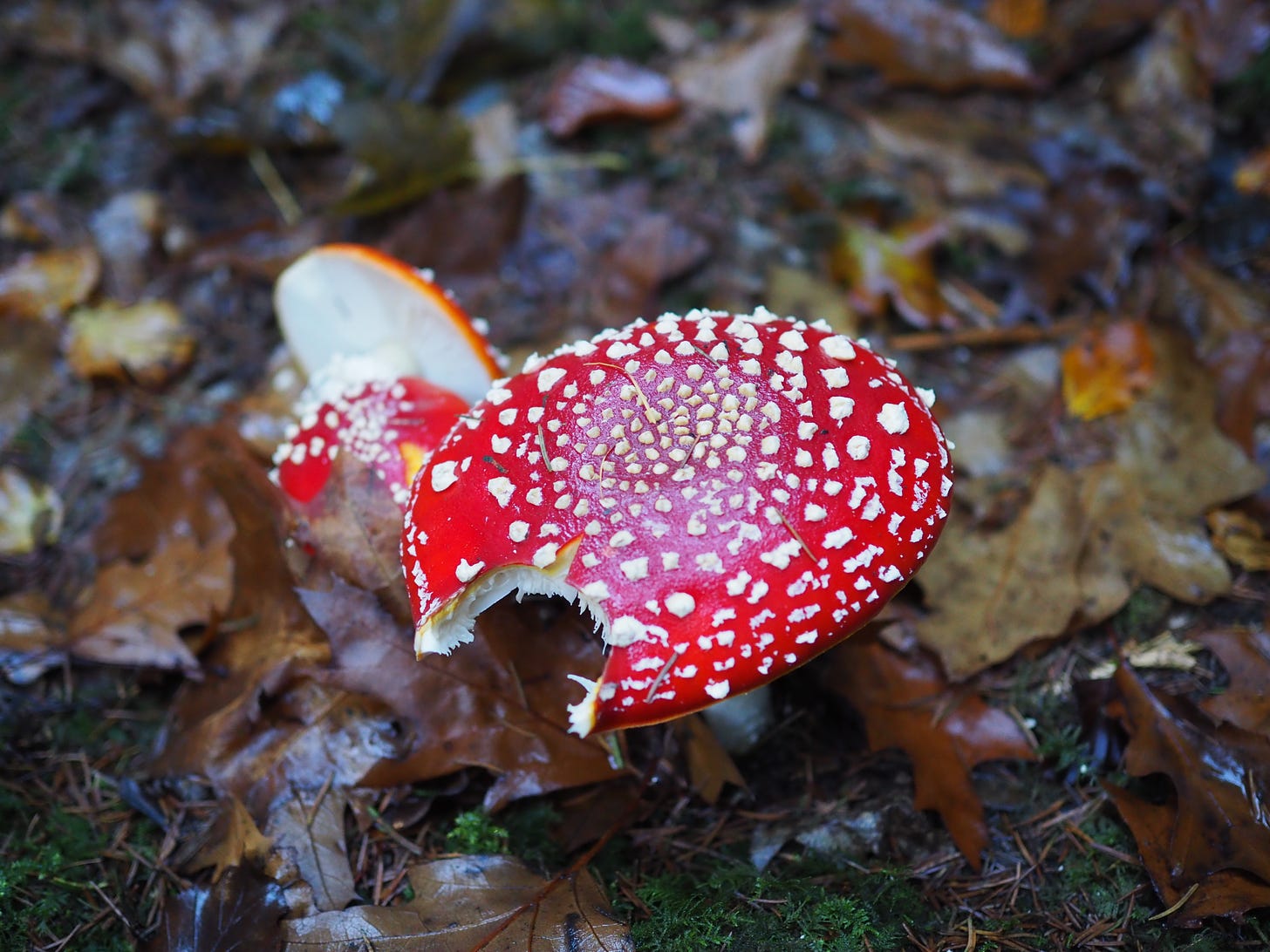Four years ago, I found a small coniferous wood tucked away inside a much larger woodland that I thought I knew better than the back of my hand. I have no idea how I had missed this area before, it was as if it had just appeared. In reality, I think that in all those previous years of exploring, I had just got lost or inadvertently walked around in circles. Anyway here it was, and here I was about to walk into something that was the start of an ongoing obsession.
It was cooler and much darker inside the smaller wood. The golden hour sun barely penetrated the thick fronds of green needles. Despite the lack of light on the ground, it was as if the moss and leaf litter were lit up by little red beacons everywhere. They were toadstools or more accurately: Amanita Muscaria / Fly Agarics.
My heart did a little bit of a flutter and I felt the excitement of being seven years old again! It’s their cute proportions, hyper-real colour and the smattering of pale dots that make them look like they’ve been iced like a cake. Not forgetting the enchantment of these curious toadstools in folklore and fairytales.
I couldn’t help myself; so very carefully I followed the trail of them further into the woods, marvelling at seeing so many in one go. Then I found a fairy ring. It was really quite spectacular to see (I’m afraid the photo I took of it didn’t do it enough justice) but just for a minute I felt that I had encountered a tiny realm of magic.
I didn’t step inside it, and I didn’t run around it nine times; however this beautiful show of nature did make me want to research the fairy ring phenomena beyond the childhood, storybook associations. This research then set in motion a love and obsession with fungi which hasn’t abated.
(Note: Fly Agarics are poisonous to humans. DO NOT PICK OR EAT).
In case you also want to know: a fairy ring is naturally occurring and is caused by fungus growing underground. In fact most of the organism is below ground. The fungus branches out with lots of small thread-like hyphae (mycelium) in a circular shape. When the fungus is ready to reproduce and spore, the mushrooms fruit - in other words emerge out of the ground - at the edge of the circle, creating the fairy ring.
It’s this underground organism that fascinates me. The idea that there is an entire mycorrhizal network connecting individual plants and trees together, sharing nutrients and transferring water, nitrogen, carbon and other minerals. That in itself feels magical - no fairytales required.
But like a lot of folk stories, there is a twist to this tale.
Each year since finding the fairy ring I have been back to the woods at the same time during the autumn. I look for edible fungi and marvel at the Fly Agarics in the conifer wood. This year was the first year since 2018 that I haven’t seen any Fly Agarics at all. Not a single one despite multiple visits this season.
At first I couldn’t understand why; but as I wandered through the wood I noticed lots of felled pines lying on the leaf litter. The further up I wandered the more trees I saw lying on the ground. It was only when I started to see more and more bark shavings and cleared areas within the conifer wood that the penny started to drop. I didn’t realise (and hadn’t noticed until this year) that it was not a wood within a wood. The perfectly straight lines of pines were actually part of a plantation. And I didn't realise that this would be felled for timber.
I was so disappointed. The wood had mostly gone, the trees had been chopped down and their bark stripped, ready to be shipped off to the timber yard. And the Fly Agarics were nowhere to be seen. In all this I realised that I am part of the problem. How can I complain or be upset when I use wooden products. I am part of the demand that keeps these trees being felled for timber, which in turn damages the delicate balance of wildlife around them. Whilst I was already aware of this on some level, reality didn’t fully hit home until I could see this connection with my own eyes.
Apart from the photo collage below which I took this month, I shot all the other photos of Fly Agarics in previous years. I’m hoping that once this section of wood has time to recover it will grow back again stronger, broader and more abundant than before.
Scientists are starting to think of fungi as Climate Change Warriors, helping woods and forests to absorb CO2. Trees form symbiotic relationships with many different root fungi. While most trees in a wood can absorb CO2, some are much better at this than others depending on the root fungi that it has a partnership with. Scientists have learned that particular root fungi (called ectomycorrhizal fungi) are helping trees absorb CO2 even faster. Yet another reason to love them.
Although there isn’t a traditional happy ending in this little story, there is a next chapter of hope: of wanting to do things better, of wanting to do more to reduce my own individual impact on the environment, of wanting to do more to protect wildlife and the eco systems that can’t be seen as well as the ones that can.
My hand is in this picture for scale. This Fly Agaric was enormous!





